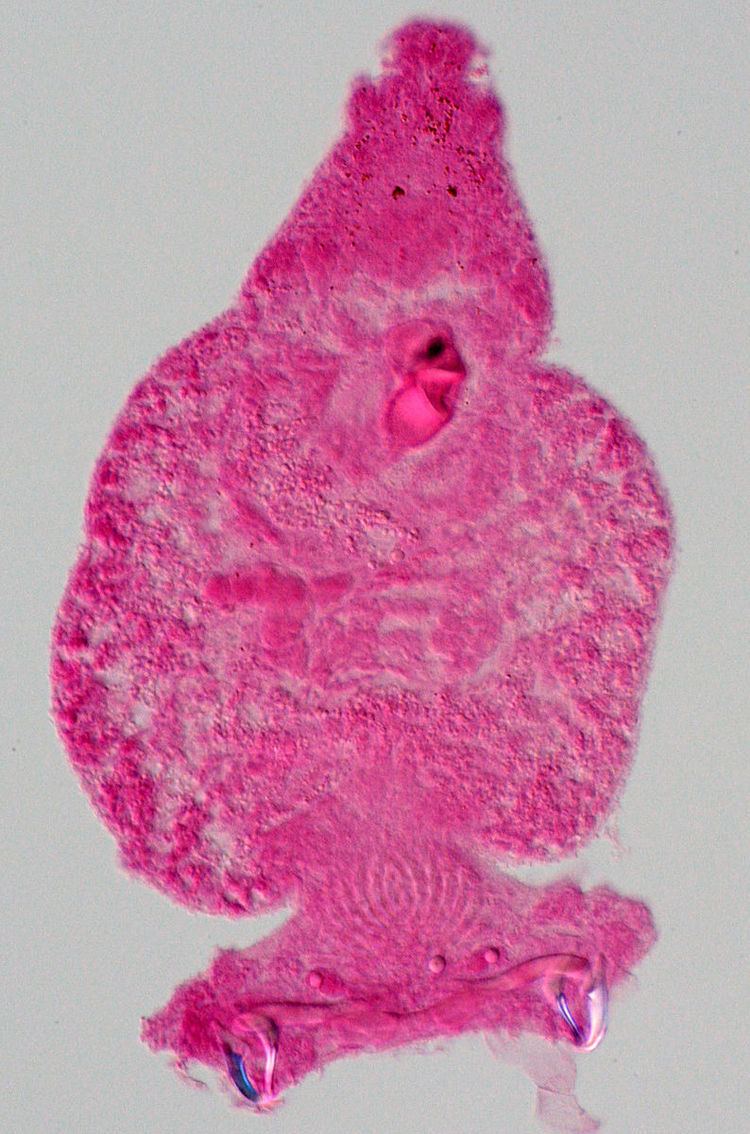Rank Family | Phylum Platyhelminthes Subclass Monopisthocotylea | |
 | ||
Similar | ||
The Diplectanidae are a family of monopisthocotylean monogeneans. They are all parasitic on the gills of fish (marine or freshwater). Diplectanids are small animals, generally around 1 mm in length. As parasites, they can be extremely numerous, up to several thousand on an individual fish.
Contents
History
The family Diplectanidae was proposed by the Italian parasitologist Monticelli in 1903 (as subfamily Diplectaninae). The status of the family and its components was later examined by various authors, including Johnston & Tiegs (1922), Price (1937), Bychowsky (1957), Yamaguti (1963), and Oliver (1987).
Morphology
Diplectanids are diagnosed by the combination of these three characters:
Genera
The 32 genera recognized in WorMs are:
References
Diplectanidae Wikipedia(Text) CC BY-SA
